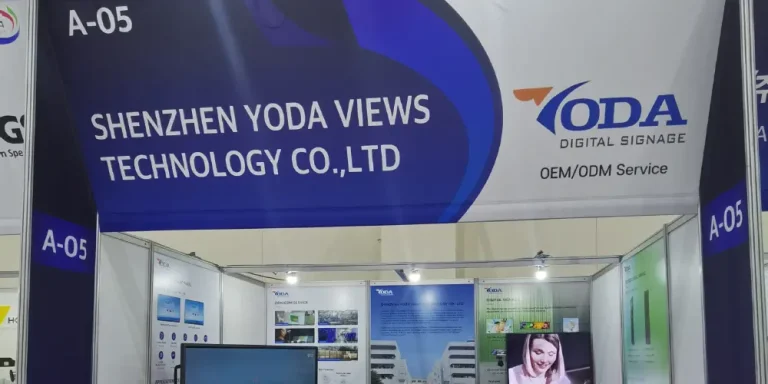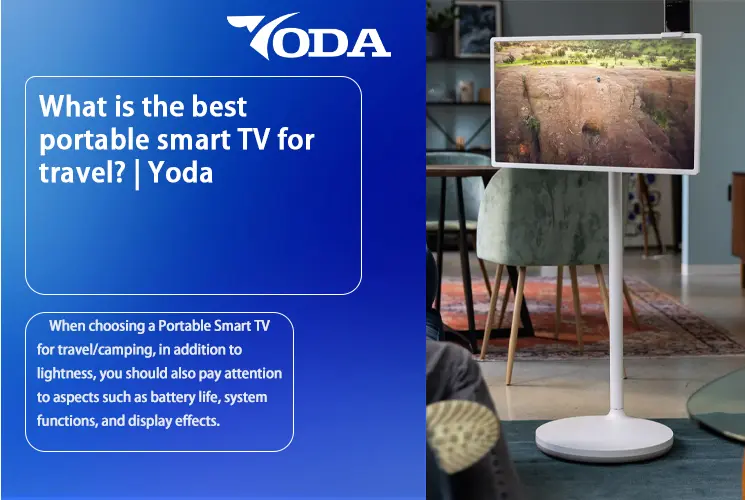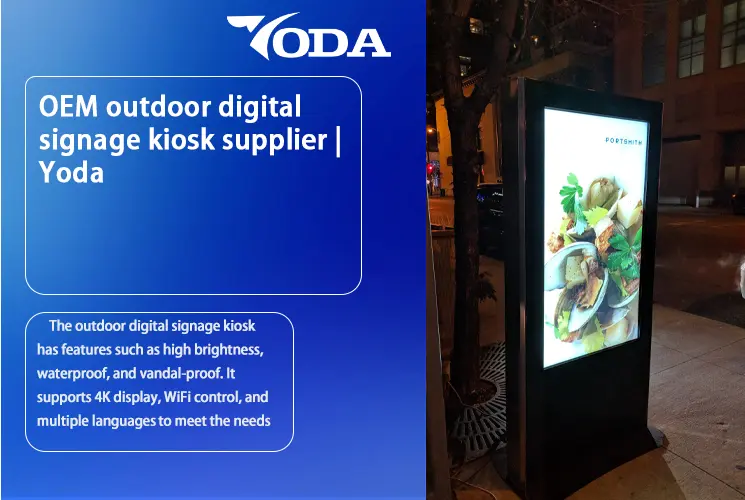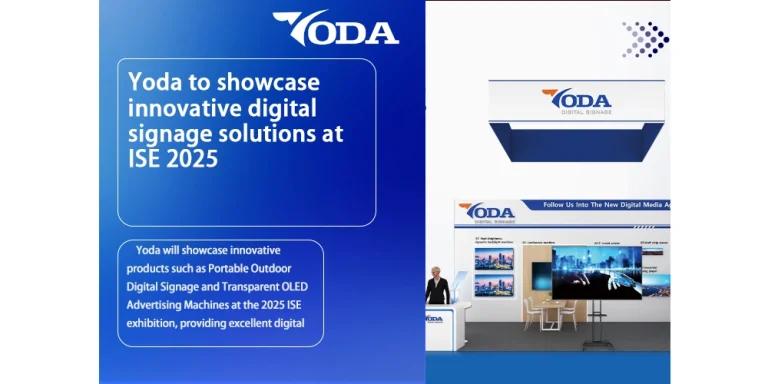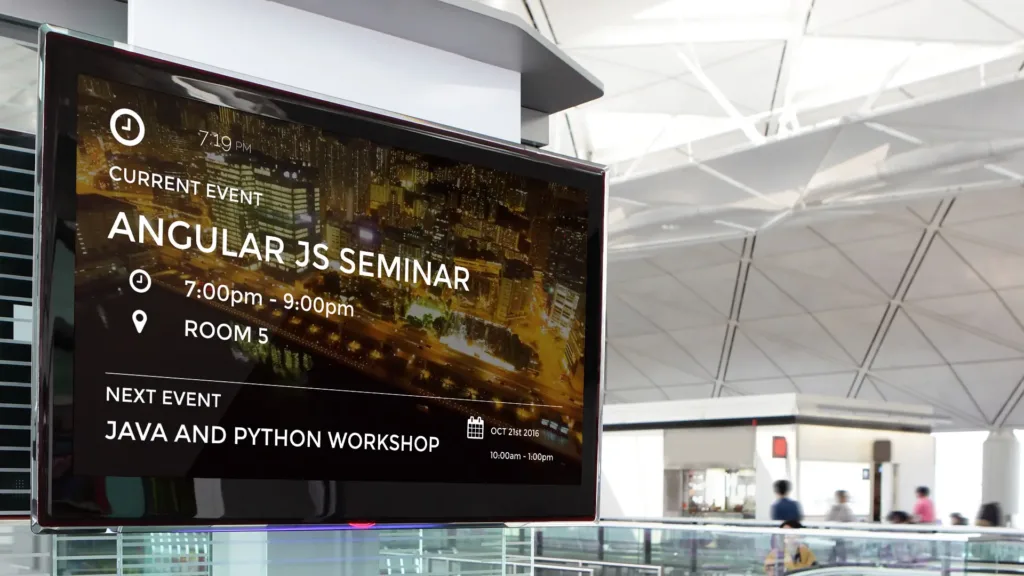
What is the difference between commercial display and TV?
Author:Yoda . 4/21/2025
In the field of digital signage and advertising display, commercial display is often confused with ordinary TV. As a brand deeply involved in the digital signage industry, Yoda will reveal the essential difference between the two from a professional perspective to help you make an accurate choice
Definition and positioning differences
Commercial display screens are designed for commercial scenarios to meet the needs of 7×24 hours of continuous operation, with an average life of more than 60,000 hours (data source: Digital Signage Today).
Home TV focuses on audio and video entertainment, and the daily usage time is usually less than 8 hours, with a design life of about 30,000 hours. Yoda series products achieve an ultra-long and stable operation cycle through industrial-grade heat dissipation structure and high-temperature resistant components.
6 core differences in hardware design
1. Brightness comparison
Commercial display screens are standardly equipped with ≥500nit high brightness (such as Yoda Pro series up to 1500nit), resisting ambient light interference; home TVs are generally ≤350nit.
2. Cooling system
Commercial models use dual fans + copper tube cooling modules, and the environmental tolerance temperature reaches -30℃~50℃; most TVs are designed for passive cooling.
3. Panel technology
Commercial IPS/VA panels support 178° wide viewing angle; TVs generally use VA panels with a viewing angle range of <160°.
4. Interface configuration
Standard RS-232C and HDMI-CEC control interfaces, support multi-screen synchronization (Yoda devices support 128-screen cascading); TVs only retain basic audio and video interfaces.
5. Protection level
Commercial models are IP5X dustproof certified (Yoda outdoor models reach IP65); TVs have no professional protection design.
6. Modular architecture
Using replaceable power board/driver board design (Yoda provides spare parts library), maintenance costs are reduced by 70%.
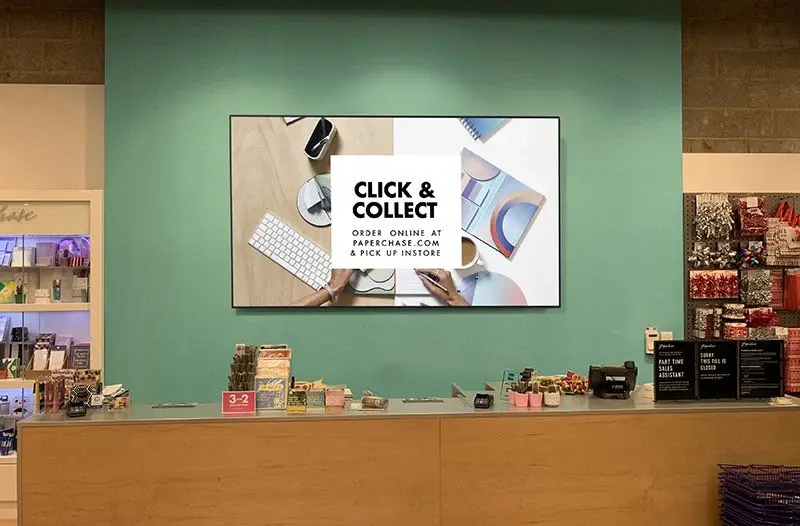
Professional evolution of software and functions
– Content management system
Commercial display screens are equipped with YodaSign OS, which supports remote batch management, time-divided playback, data statistics and analysis and other functions.
– Advertising delivery system
Integrated dynamic content templates (Yoda provides 1000+ template libraries), face recognition advertising push and other intelligent functions.
– Security protection mechanism
Equipped with hardware-level data encryption (in line with GDPR standards), automatic locking of illegal access and other enterprise-level security solutions.
Comparative analysis of application scenarios
Retail stores: Commercial display screens support split-screen product display + interactive shopping guides; home TVs cannot withstand 12 hours/day continuous playback.
Transportation hubs: Commercial display screens have anti-glare + high brightness to ensure information visibility; home TVs have blurred images under strong light.
Outdoor advertising: Commercial display screens have IP65 protection + 5000:1 high contrast; home TVs have no waterproof and dustproof design.
Long-term game of cost-effectiveness
Although the initial investment of commercial display screens is 1.5-2 times higher than that of TVs (taking 55 inches as an example), its full life cycle cost advantage is significant:

Yoda’s professional solutions
As a manufacturer with dual ISO 9001/14001 certification, Yoda provides:
How to choose the right equipment?
Follow the 3-step decision-making method:
1. Evaluate the intensity of use: Commercial models must be selected if the daily operation is greater than 10 hours
2. Analyze environmental factors: Professional protection is required for scenes with dust, high humidity, and large temperature differences
3. Plan functional expansion: Choose an intelligent system when advertising management/interactive functions are required
Conclusion
The essential difference between commercial display screens and TVs lies in industrial-grade reliability and adaptability to commercial scenarios. Yoda recommends: For scenes involving brand image display and high-intensity use, choose professional commercial display equipment. Contact our technical team now to get customized digital signage solutions!

